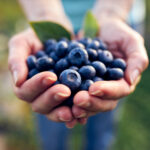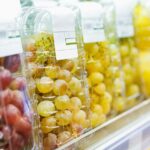Agronometrics in Charts: High quality table grapes awaited from California despite weather delays

In this installment of the ‘Agronometrics In Charts’ series, Sarah Ilyas studies the state of the California grape season. Each week the series looks at a different horticultural commodity, focusing on a specific origin or topic visualizing the market factors that are driving change.
Over 99% of grapes produced commercially in the United States today are grown in California. With more than 80 varieties grown, California grapes come in three colors – green, red, and black. Table grapes are in season from May to December. The first grapes are harvested in the Coachella Valley in late spring. By midsummer, the harvest shifts to the Central Valley in the north.
Harvests in the Coachella Valley are estimated to start in mid-to-late May, says Kathleen Nave, president of the Fresno-based California Table Grape Commission.
Late June or early July should mark the start of harvests in the San Joaquin Valley. Early forecasts indicate that the 2023 harvest will be comparable to or slightly larger than the 95.1 million 19-pound boxes produced during the previous season.
“An aggressive marketing campaign is planned for 2023 to increase demand for California table grapes in both domestic and export markets by motivating retailers to move volume throughout the season and motivating primary shoppers to choose California grapes,” says Nave.
These target markets accounted for 94.4% of export volume between June and December of 2022. “In spite of labor and shipping challenges, and inflation and the value of the dollar, California table grapes still found success in export markets last season,” says Nave.
“While there still may be challenges ahead for global exports, the 2023 export marketing campaign will work to drive demand for California table grapes around the world,” Nave added.
 Source: USDA Market News via Agronometrics.
Source: USDA Market News via Agronometrics.
(Agronometrics users can view this chart with live updates here)
 Source: USDA Market News via Agronometrics.
Source: USDA Market News via Agronometrics.
(Agronometrics users can view this chart with live updates here)
This year, weather and production are normal in Peru and Chile, while Mexico appears to be seven to 10 days late, and in California, harvesting typically begins on July 4 but will likely be closer to July 10 this year, says Pete Hronis, senior vice president of sales and marketing at Hronis Inc. in Delano, Calif.
“Table grapes from Mexico and South America seem to start earlier and last longer, which increases competition,” he said. “It will continue to be important for California growers to market exceptional, quality-oriented grapes and to continue to show the customer why grapes from California are truly the best.”
 Source: USDA Market News via Agronometrics.
Source: USDA Market News via Agronometrics.
(Agronometrics users can view this chart with live updates here)
A third-generation family farm in the Coachella Valley, Tudor Ranch specializes in the cultivation, packaging and distribution of fresh California table grapes. Despite cool weather that has slowed crop growth, the company is observing outstanding bunch counts and growth across all varieties.
“Normally we would start harvesting around May 10-12,” says Joseph Tudor, vice president of the company. “This season we expect to start closer to May 22.”
Pricing in the upcoming season will largely be dictated by the push and pull of supply and demand; owing to the later start, a higher degree of overlap could be expected with the Peruvian table grape season which could impact prices towards the end of the season. Last season saw prices ranging from $28.08 per package in week 45 of 2022 to $21.08 per package in week 15 of 2023.
 Source: USDA Market News via Agronometrics.
Source: USDA Market News via Agronometrics.
(Agronometrics users can view this chart with live updates here)
IFG predicts that more varieties with exotic flavors will be introduced to the market in order to satisfy consumers' preferences. The industry has continued to devise new strategies to adjust to the ever sophisticated palates of consumers. “Today, table grapes can be spicy, minty, or have a tropical taste and aroma.
Some taste a bit like toffee or strawberries – and imagine grapes that contain a slight floral or papaya accent,” says Jennifer Maguire, IFG’s international commercial table grape manager.
According to IFG, fruit enthusiasts are not the only ones who can benefit from fruits with more unique flavors; retailers can also increase their sales by marketing their products in unconventional ways. IFG is the world’s largest fruit-breeding company and currently owns patents for over 48 table grape varieties and 10 sweet cherry varieties. Founded in 2001 and headquartered in Bakersfield, California, IFG patents and licenses its fruit varieties to marketers and growers across the globe.
In our ‘In Charts’ series, we work to tell some of the stories that are moving the industry. Feel free to take a look at the other articles by clicking here.
All pricing for domestic US produce represents the spot market at Shipping Point (i.e. packing house/climate controlled warehouse, etc.). For imported fruit, the pricing data represents the spot market at Port of Entry.
You can keep track of the markets daily through Agronometrics, a data visualization tool built to help the industry make sense of the huge amounts of data that professionals need to access to make informed decisions. If you found the information and the charts from this article useful, feel free to visit us at www.agronometrics.com where you can easily access these same graphs, or explore the other 21 commodities we currently track.














































